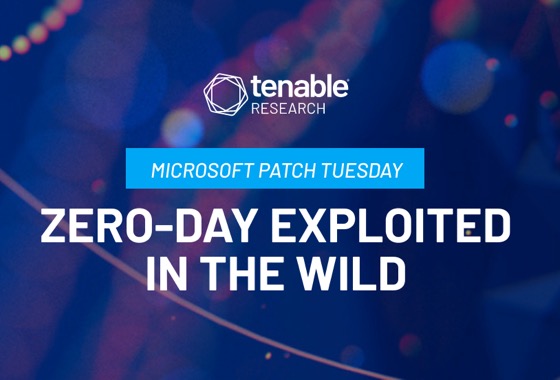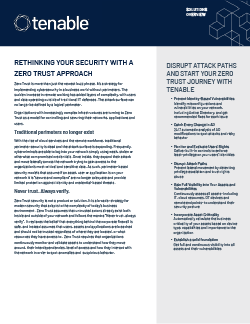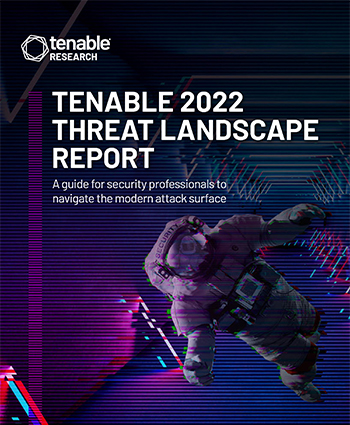Understanding Zero-Day Vulnerabilities, Exploits and Attacks
If you’re a developer, you understand that misconfigurations and flaws in code happen, even if you’ve done your best to make sure they don’t. When these and other similar security issues occur — whether during development or long after an application, solution or device is active in production — it can create nightmares when these issues expose vulnerabilities that attackers can uncover and exploit.
When these types of vulnerabilities are unknown to the organization that developed the software, application or device — and an attacker or someone else uncovers it before the organization has a chance to remediate it — it’s often referred to as a zero-day vulnerability.
Zero-day vulnerabilities introduce great risk for users who don’t know about them or haven’t been offered the right patch or other resources to fix them.
As long as a zero-day vulnerability is unresolved, attackers will have full opportunity to take advantage of it, exploit the vulnerability (known as a zero-day exploit), and potentially do additional harm to your systems, data and network.
In this guide, you can take a closer look at all things related to zero day, from vulnerabilities to exploits and attacks, and learn what you can do to protect your organization from these threats.
Here’s what you’ll discover:

Zero Days Do Not Wait for CVEs
CVE release can lag behind zero-day exploits. Here’s what to do in the interim.
Learn MoreZero Day community
Join the Tenable Connect community to learn more about zero-day exploits and attacks.
Learn MoreTenable is No. 1 in Zero-Day Research
Since January 2019, Tenable Research has disclosed more than 450 zero-day vulnerabilities, making it No. 1 in zero-day research within the vulnerability management industry. You can count on Tenable Research for trusted cyber risk intelligence, data science insight, alerts and security advisories.

Tales of Zero Day Disclosure
Discovering and disclosing vulnerabilities is an important part of modern cybersecurity. When researchers invest time in uncovering these security flaws, it gives vendors a chance to remediate them, for example by issuing a patch, before attackers find them first and take advantage of the exposure.
Yet, even though this is part of common practice across the industry today, there are still a great number of undisclosed vulnerabilities across many applications, software and devices. This creates challenges for both researchers and vendors, especially in situations where they don’t agree or connect to share this valuable information.
In this white paper by Tenable’s Zero Day Research team, they share insight into some of their challenging experiences working through zero-day vulnerability disclosures, including times when vendors were resistant to hearing about the discovered security issues.
It will tell you about how Tenable Research addressed issues when vendors:
- Said a discovered vulnerability wasn’t in scope or was unsubstantiated
- Became hostile toward zero-day researchers
It will also tell you about what you can learn from these interactions and how to work more closely with zero day researchers to break down these barriers going forward.
Zero Day Tech Insights
Rethinking Your Security With a Zero-Trust Approach
Ahh, remember the days in information security where you could build a perimeter around your on-site IT and feel good about your defenses? With more cloud adoption and more interconnected devices expanding modern attack surfaces, that traditional security perimeter is now a thing of the past.
So, what can you do? How can you better protect your attack surface, especially as it continually expands and changes while the threat landscape becomes increasingly complex and attackers get ever-more sophisticated in their attack methods?
This is where adopting zero trust can help. But, what exactly does zero trust mean and how can you apply it most effectively?
You can start by reading “Rethinking Your Security with a Zero Trust Approach,” where you can learn more about:
- Why your organization needs zero trust
- What zero trust is and why it’s important
- Key zero trust principles
- How Tenable can help your organization address zero trust
Zero-Day Vulnerabilities
Zero-day vulnerabilities introduce risks for organizations because there usually aren’t any patches or updates to fix them. Why does this happen? Often, it’s because the software or device creator is unaware the security issue exists.
How do organizations learn about these vulnerabilities? In best case scenarios, security researchers uncover the issues before attackers do. Researchers often do this by developing a proof of concept (PoC) to demonstrate that the potential vulnerabilities exist and then share this information with a developer responsible for the application, solution or device. The goal here is to give developers a heads-up so they can quickly issue a patch before attackers discover and exploit the weakness.
But what else can your organization do to stay one step ahead of attackers?
Take a look at Tenable’s Threat Landscape Report to explore more about zero-day vulnerabilities, their place in the modern vulnerability landscape and what you can do to address them.
Frequently Asked Questions about Zero-Day Vulnerabilities
Do you have questions about zero-day vulnerabilities but not sure where to start? Check out this zero-day FAQ.
What is a zero-day vulnerability?
Why is it called zero day?
What is a zero-day exploit?
What is a zero-day attack?
How does a zero-day attack work?
What are some examples of zero-day attacks?
Are zero-day vulnerabilities and zero trust related?
Who is behind zero-day attacks?
What is targeted in a zero-day attack?
Tenable Connect community: From vulnerabilities to exploits, your go-to resource for zero day info
Do you have questions about zero-day vulnerabilities or zero-day attacks? Tenable Connecct is a great place for interested professionals to connect and discuss all things related to zero day and zero trust.
Detecting Zero-Day Vulnerabilities: Searching for Plugins Related to CVE
While Zero-Day vulnerabilities are not something we'd like to occur, they happen. At Tenable, our research team is dedicated to identifying and reporting zero-day vulnerabilities. After our team discovers a vulnerability, Tenable will: report it to the vendor; announce the vulnerability via our public outlets; and develop plugins to address the vulnerability.
Read MoreDefending Against Ransomware: Common Exploits
Attackers prey on remote access infrastructure and web application flaws for entry points into the network. Vulnerabilities are exposures attackers can exploit and can be in the form of a software defect, configuration error or basic human error. Ransomware strains are increasingly using software vulnerabilities as the initial attack vector.
Read MoreCIS Control 2: Inventory and Control of Software Assets
CIS states, "Some sophisticated attackers may use zero-day exploits, which take advantage of previously unknown vulnerabilities for which no patch has yet been released by the software vendor. Without proper knowledge or control of the software deployed in an organization, defenders cannot properly secure their assets"
Read MoreTenable Podcast
Foxy Zero Days and MSSP Misery
In this episode Bill and Gavin talk about a Firefox Zero Day, organizations facing bankruptcy due to ransomware, MSSPs as attack vectors and C&C Slack. They are joined by Matt Everson and Justin Brown from Tenable Research team.
Listen NowReviewing 90-Day Responsible Disclosure Policies in 2022
For responsible vulnerability disclosure, the industry generally recognizes a 90-day disclosure window, which should enable researchers to release the info to the vendor and then enable the vendor to issue a fix before a public announcement. But is that enough time?
Listen NowWhat is Exposed Externally That You’re Unaware Of, What Can Attackers See
Exposure management has a number of key challenges organizations of all sizes face. In this podcast episode, Tenable’s Zero Day Research team talks with one of its principal security advisors to take a closer look at how you can determine your level of exposure, understand what causes vulnerabilities and explore how you can fix them.
Listen NowActively Discover, Understand and Prioritize Attack Surface Vulnerabilities
As your attack surface expands and new applications, solutions and assets rapidly spin up and down in your cloud environment, it can be challenging to see where you might have vulnerabilities before attackers can exploit them. But it doesn’t have to be. Tenable One can give you insight into all of your risks, from build to runtime, so you can build security into the core of your organization from the ground up.
Zero-Day Blog Bytes

Zero Days Do Not Wait for CVEs
CVE creation can lag behind zero days because exploits are discovered before anyone can properly categorize and write up a relevant CVE release for new vulnerabilities. That is not always true, but it happens frequently enough. In this blog, learn more about how an up-to-date attack surface map can help your teams find critical vulnerabilities, even in some cases where you traditional network security scanner doesn’t.

Zero In and ‘Zero Click’ into the Current Vulnerability Landscape
Thousands of vulnerabilities are disclosed every year and it makes it increasingly challenging for your security team to keep up with what’s released, understand potential impact on your organization and to make plans to prioritize what matters most first. This blog takes a closer look at some recent vulnerabilities and their potential impact so you can better understand common traits and what you could do to expand vulnerability coverage.

Zero Day Vulnerabilities in Industrial Control Systems
When researchers disclosed zero-day vulnerabilities for Schneider Electric’s industrial control systems (ICS), it highlighted a real-world scenario of some of the many security challenges that exist today in the modern critical infrastructure ecosystem. This blog takes a closer look at those vulnerabilities and offers some action items that may help your organization better secure your critical infrastructure environment.

Microsoft’s November 2022 Patch Tuesday Addresses 62 CVEs
In late November 2022, Microsoft patched 62 CVEs, including four zero-day vulnerabilities that attackers had exploited in the wild. This blog takes a closer look at what those vulnerabilities are, highlights a few of the most critical and important ones, and offers solutions about how you can quickly use Tenable plug-ins to patch systems and address these issues.
Tenable Research on Medium
Want to learn more about how Tenable Research discovers zero-day vulnerabilities and what it’s doing to help organizations like yours discover and remediate them? Check out Tenable Research’s tech blog on Medium to learn more about everything from the latest CVEs to how your security and IT teams can work better together, to the latest developments in Tenable products and services.

Eliminate Attack Paths with Tenable One
If you don’t know which assets you have — and how many you have, where they are and how they’re used — it’s difficult to get insight into which vulnerabilities might exist in your attack surface. You also lose insight into their interconnectivity and how attackers might exploit those weaknesses to move laterally across your attack surface, often without you knowing, especially if they’re taking advantage of a zero-day vulnerability you haven’t yet discovered.
Tenable One can help your security teams understand the interconnectivity of all of your assets and help them visualize potential attack paths threat actors might take to exploit your vulnerabilities. With Tenable one, you can see everything across your attack surface, including the ability to identify security issues during your software development lifecycle so you can stay one step ahead of attackers.
Get a Unified View of Your Attack Surface to Discover and Fix Vulnerabilities
Tenable One empowers security teams with a unified view of all assets and related vulnerabilities — even for software and applications throughout the software development lifecycle — so you can easily predict and prioritize what needs remediation before attackers get a chance to exploit your weaknesses.
- Tenable One

